Looking for a bold, striking indoor plant that’s both low-maintenance and dramatic? Meet the Rubber Tree (Ficus elastica) — a classic houseplant known for its glossy, deep green leaves and towering presence. This tropical beauty can elevate the look of any room with its rich foliage and adaptable nature.
Though it’s relatively easy to care for, the Rubber Tree has a few specific needs to thrive indoors. In this detailed guide, we’ll walk you through everything you need to know about growing and maintaining a healthy Rubber Tree plant indoors.
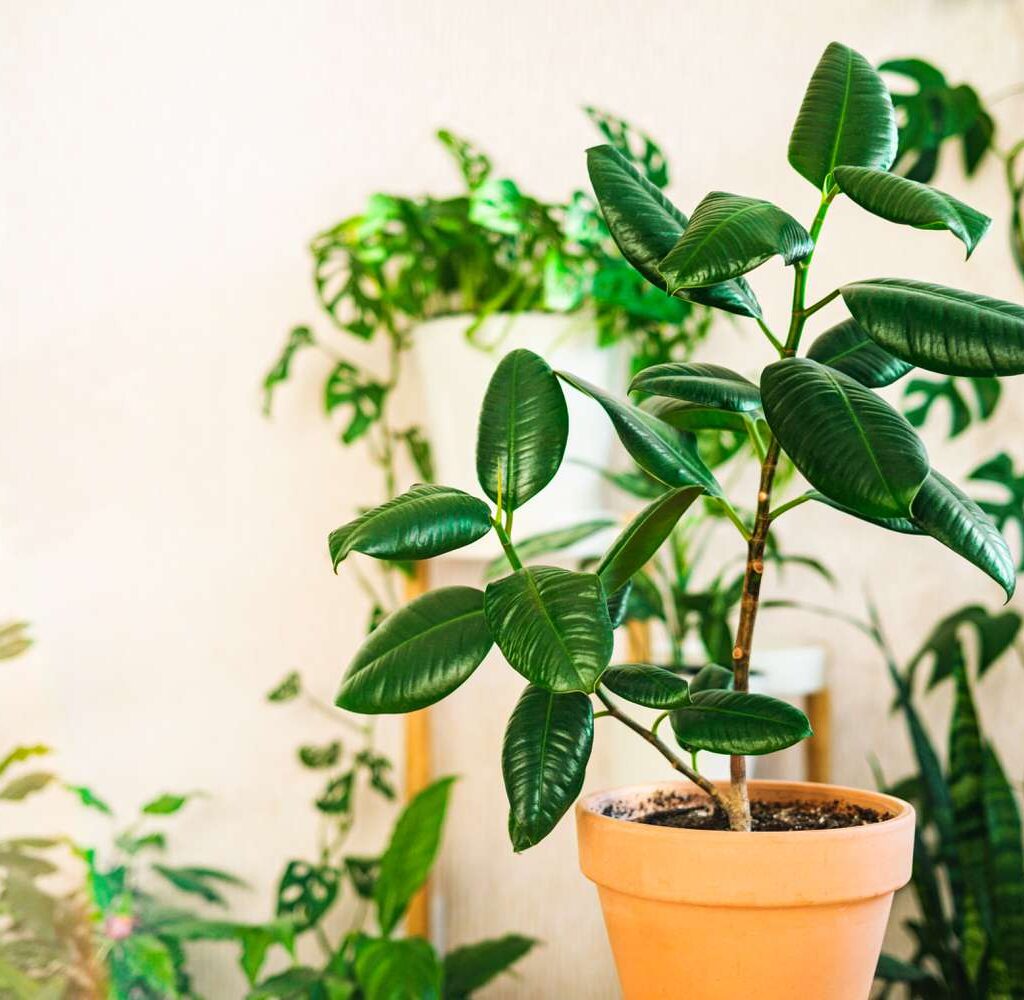
What is a Rubber Tree Plant?
The Rubber Tree plant, scientifically known as Ficus elastica, is a species native to Southeast Asia. In its natural habitat, it can grow over 100 feet tall, but when cultivated indoors, it typically reaches 6-10 feet — still an impressive height for a houseplant.
Rubber Trees are loved for their large, glossy, oval-shaped leaves that range from deep green to burgundy, depending on the variety. Some popular cultivars include:
- ‘Burgundy’ – dark, almost black foliage
- ‘Tineke’ – green leaves with creamy-white variegation
- ‘Ruby’ – green and pink-tinged leaves
Aside from their stunning looks, Rubber Trees are known for their ability to purify indoor air, making them a popular choice for homes and offices.
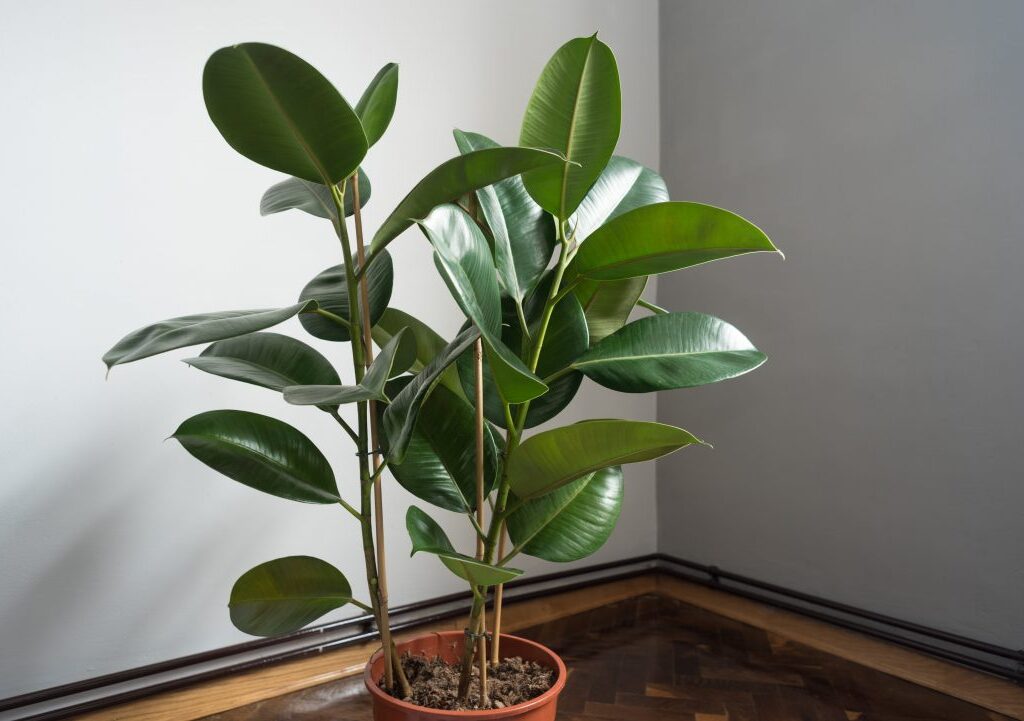
Ideal Growing Conditions for a Rubber Tree Plant Indoors
Creating the right environment is the first step toward growing a thriving Rubber Tree indoors. Let’s look at the essentials:
1. Light Requirements
Rubber Trees love bright, indirect light. While they can tolerate medium light, insufficient lighting may cause the leaves to lose their vibrant color and slow down growth.
Ideal spot:
- Near an east or south-facing window with filtered sunlight
- Avoid harsh, direct afternoon sun, which can scorch the leaves
If your Rubber Tree’s leaves start dropping or turning dull, it might be craving more light.
2. Temperature and Humidity
Being a tropical plant, the Rubber Tree prefers warm, consistent temperatures and moderate to high humidity.
- Ideal temperature: 65°F to 80°F (18°C to 27°C)
- Avoid: Temperatures below 55°F (13°C), sudden drafts, or air conditioning vents
To boost humidity, consider misting the leaves, using a room humidifier, or placing the plant on a pebble tray filled with water.
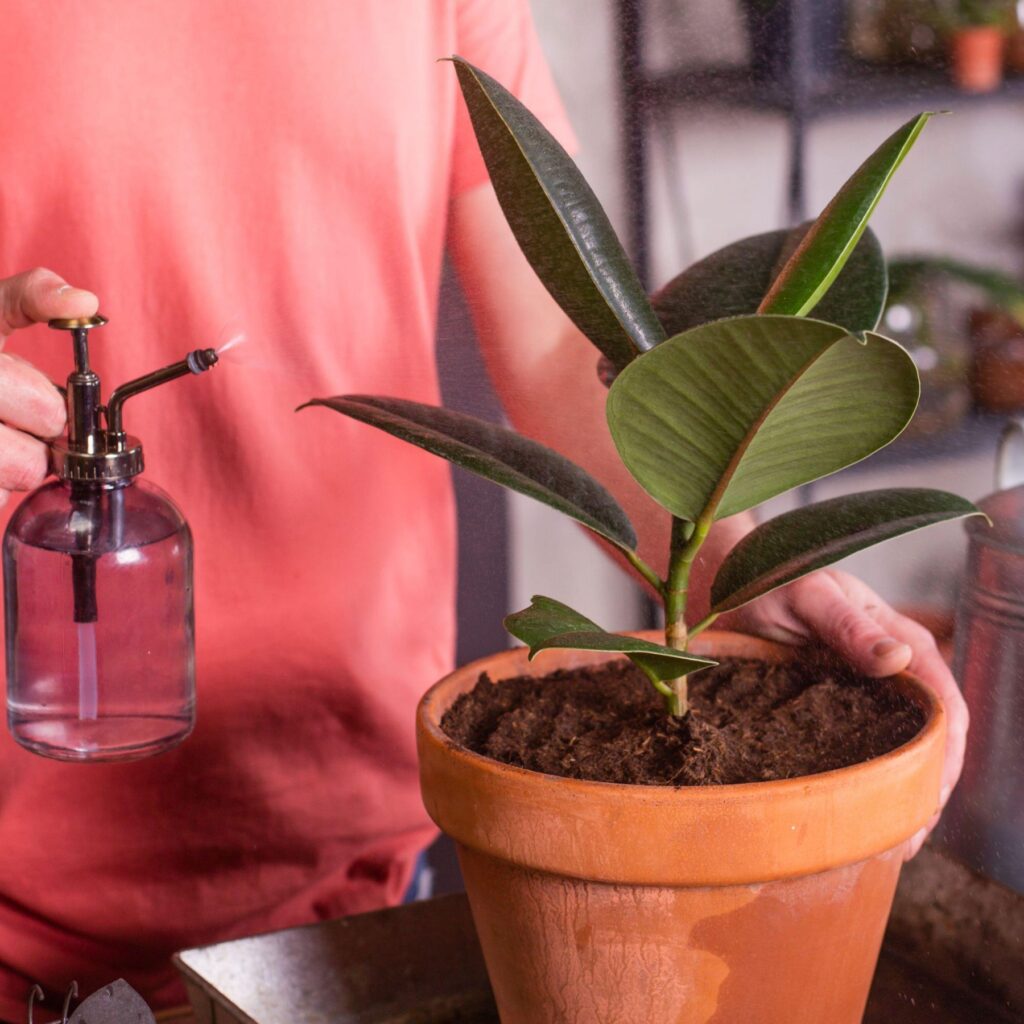
How to Water a Rubber Tree Plant
Watering is a critical aspect of Rubber Tree care. They prefer soil that’s consistently moist but not soggy. Overwatering can lead to root rot, while underwatering causes leaf drop.
Watering Guidelines:
- Water thoroughly when the top 1-2 inches of soil feels dry to the touch.
- Use room-temperature, filtered water.
- In spring and summer, water more frequently as the plant is actively growing.
- In fall and winter, reduce watering as growth slows.
Pro Tip: Always check the soil before watering. If in doubt, it’s safer to underwater than overwater.
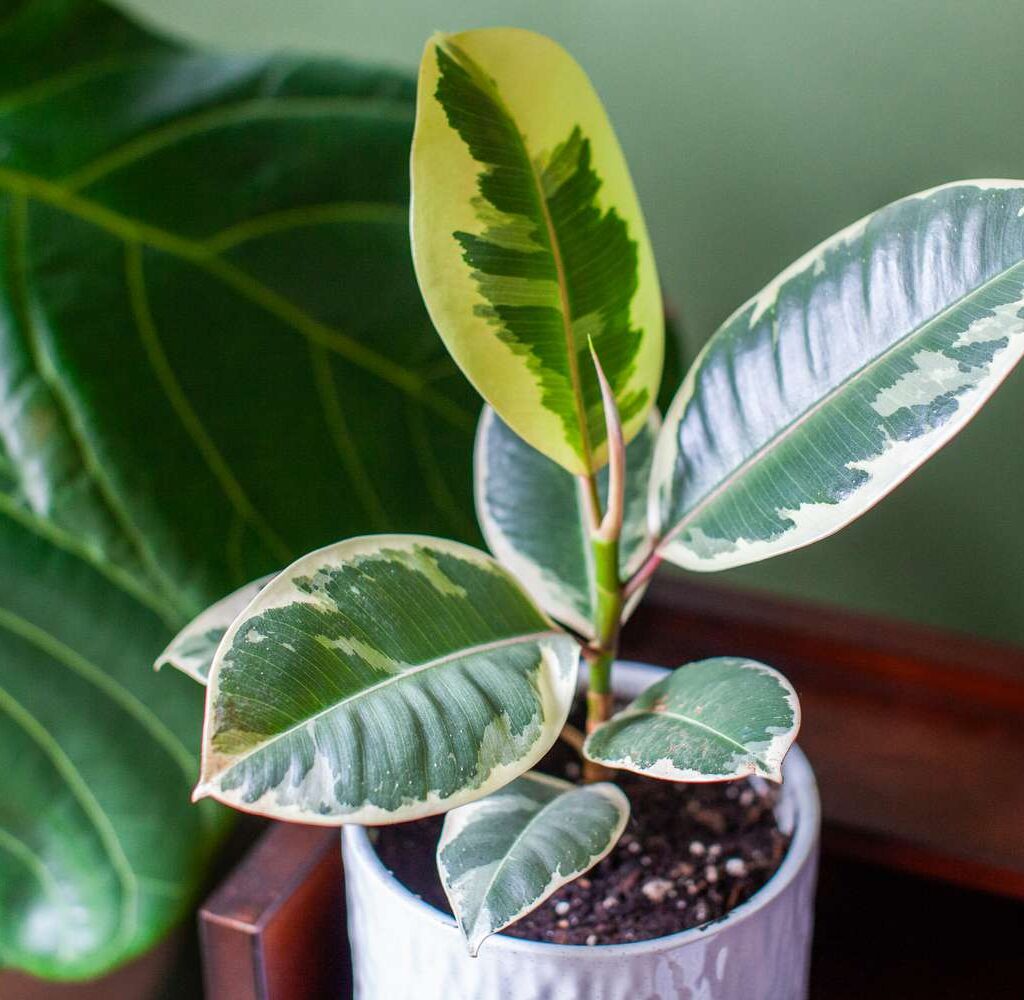
Best Soil for a Rubber Tree Plant
A well-draining, aerated soil mix is essential for Rubber Trees to prevent root rot and maintain healthy growth.
Recommended mix:
- 2 parts peat-based potting soil
- 1 part perlite or coarse sand
- 1 part pine bark or orchid bark (for improved aeration)
Ensure your pot has good drainage holes to allow excess water to escape.
Fertilizing a Rubber Tree Plant
To support healthy foliage and steady growth, especially during the active growing season, regular fertilizing is beneficial.
Fertilizing Tips:
- Use a balanced, water-soluble fertilizer (10-10-10 or 20-20-20)
- Apply every 4-6 weeks in spring and summer
- Stop fertilizing in fall and winter when the plant enters dormancy
Over-fertilizing can damage roots and cause leaf burn, so it’s better to under-feed than over-feed.
Pruning and Shaping a Rubber Tree Plant
Regular pruning helps maintain the shape, height, and fullness of your Rubber Tree. It also encourages branching, making the plant look lusher.
How to prune:
- Use sharp, clean pruning shears.
- Cut just above a leaf node (the point where a leaf joins the stem).
- Remove dead, damaged, or leggy growth.
- Wear gloves — the plant’s milky sap can irritate the skin.
Pro Tip: To control height, cut the main stem at your desired height, and side branches will grow below the cut.
Repotting a Rubber Tree Plant
As your Rubber Tree grows, it may outgrow its pot. Repotting ensures that the roots have enough space and the soil remains fresh and nutrient-rich.
Signs it’s time to repot:
- Roots growing out of drainage holes
- Water runs through the soil too quickly
- Slow growth despite good care
How to repot:
- Choose a pot 1-2 inches larger in diameter than the current one.
- Refresh the potting mix.
- Gently loosen the root ball before placing it in the new pot.
- Water thoroughly after repotting.
Best time: Spring or early summer, during active growth.
Common Rubber Tree Plant Problems and Solutions
Even though Rubber Trees are generally hardy, occasional issues can arise. Here’s how to troubleshoot:
1. Yellowing Leaves
Cause: Overwatering or poor drainage
Solution: Check soil moisture, improve drainage, and allow soil to dry between waterings.
2. Dropping Leaves
Cause: Sudden temperature changes, low humidity, or underwatering
Solution: Keep the environment stable, boost humidity, and maintain consistent watering.
3. Brown Leaf Tips
Cause: Low humidity or underwatering
Solution: Increase humidity and adjust watering frequency.
4. Pests (Spider Mites, Mealybugs)
Cause: Dry indoor air and dust on leaves
Solution: Wipe leaves with a damp cloth, mist regularly, and treat infestations with neem oil or insecticidal soap.
Rubber Tree Propagation
If you’d like to multiply your Rubber Tree collection, propagation is easy through stem cuttings.
Propagation steps:
- Cut a healthy stem about 6 inches long with at least one leaf.
- Remove the lower leaf and dip the cut end in rooting hormone.
- Place the cutting in moist potting soil or water.
- Keep in a warm, bright spot with indirect light.
- Roots should develop in 4-6 weeks.
Rubber Tree in Home Decor and Feng Shui
The Rubber Tree’s bold, upright growth and lush foliage make it a natural focal point in any room. It works beautifully in modern, bohemian, or minimalist interiors.
In Feng Shui, Rubber Trees are believed to attract prosperity and positive energy. They’re often placed in wealth or career corners (southeast or north areas of a room).
Final Care Tips for a Thriving Indoor Rubber Tree
To keep your Rubber Tree looking its best, remember these quick tips:
- Bright, indirect light is best.
- Water when the top 1-2 inches of soil are dry.
- Maintain warm temperatures and moderate humidity.
- Fertilize every 4-6 weeks in growing season.
- Prune regularly for shape and size control.
- Clean leaves with a damp cloth to remove dust and pests.
Conclusion
The Rubber Tree plant is a stunning, easy-care houseplant that makes a bold statement in any indoor space. With its rich, glossy leaves and towering form, it’s an excellent addition to both homes and offices.
By providing the right amount of light, water, warmth, and occasional pruning, you can enjoy a vibrant, healthy Rubber Tree plant for years to come. It’s the perfect combination of beauty, air purification, and low-maintenance elegance — everything you could want in an indoor plant.

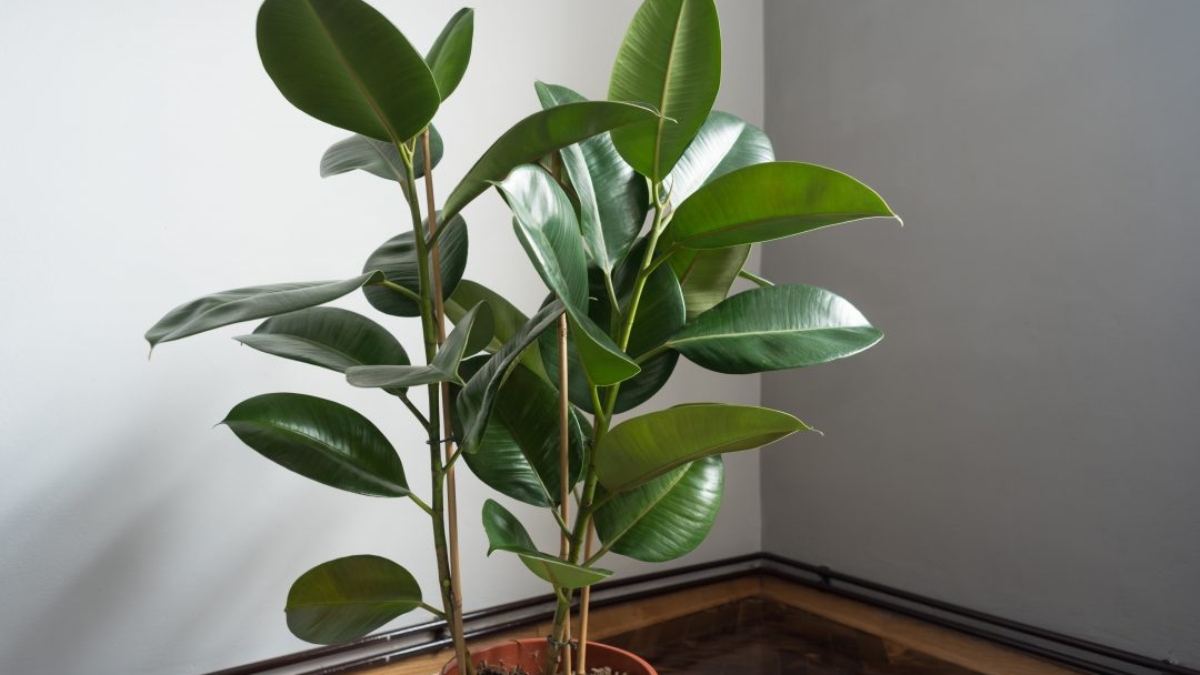




Leave A Comment